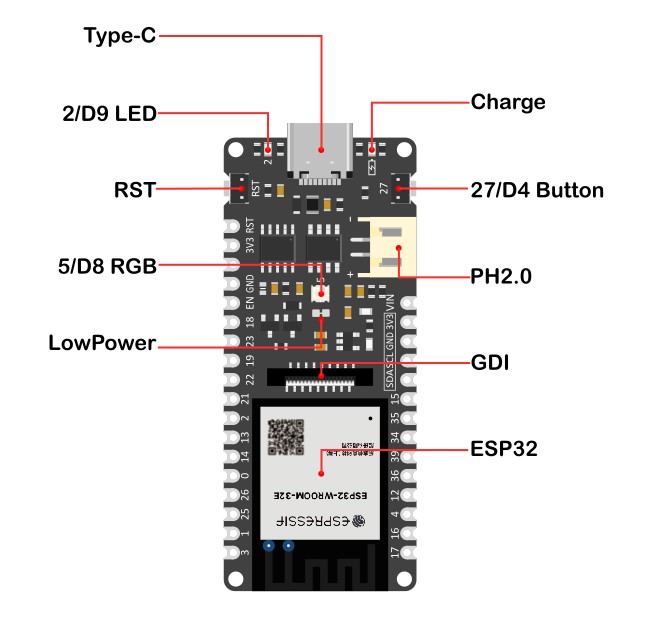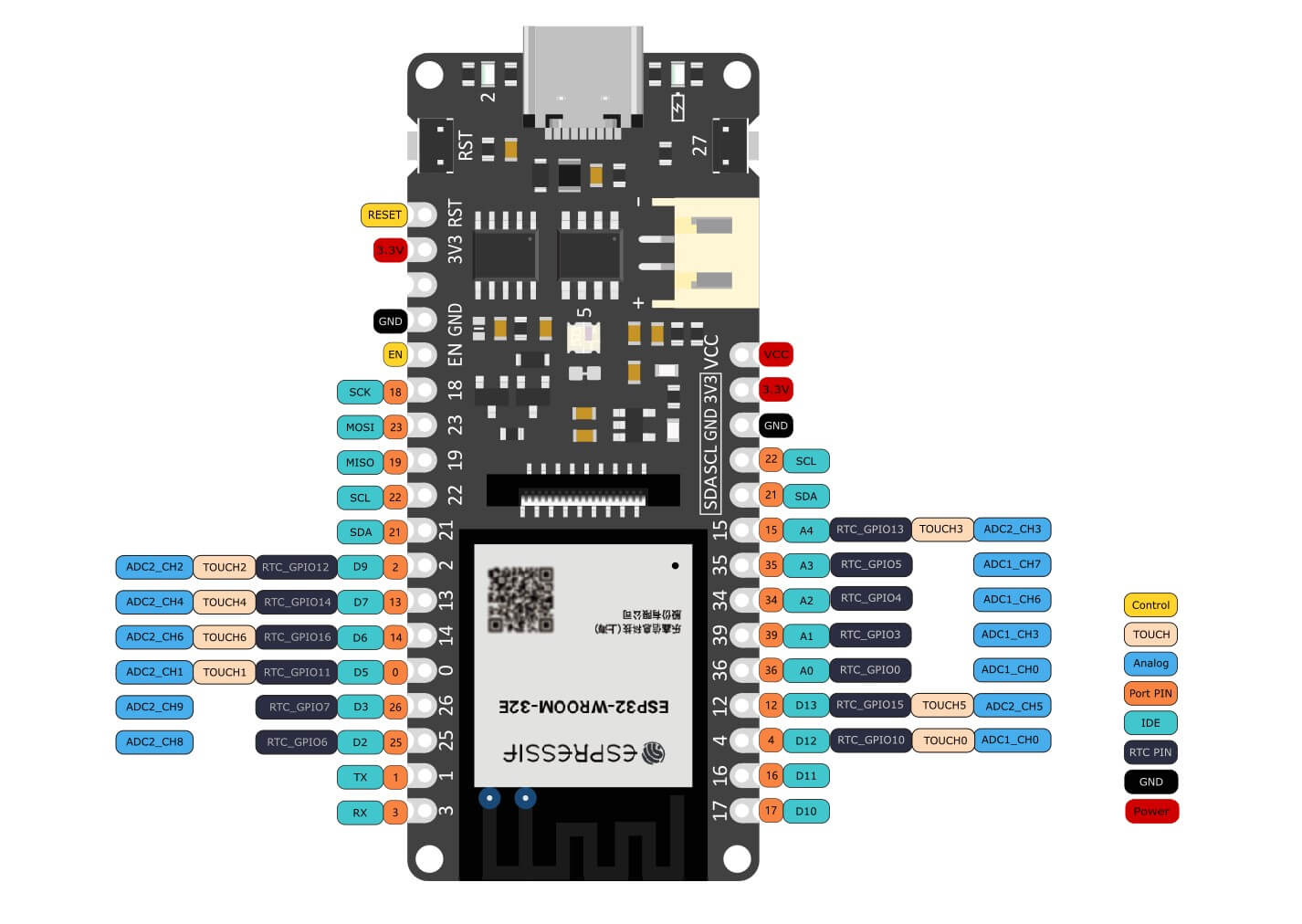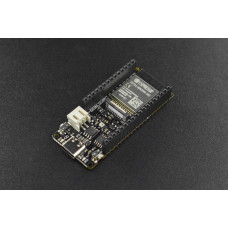FireBeetle 2 ESP32-E IoT Microcontroller with Header (Supports Wi-Fi & Bluetooth)
INTRODUCTION :
FireBeetle 2 ESP32-E, specially designed for IoT, is an ESP-WROOM-32E-based main controller board with dual-core chips.
DFR0654-F supports WiFi and Bluetooth dual-mode communication and features a small size, ultra-low power consumption, onboard charging circuit, and easy-to-use interface, which can be conveniently used for smart home IoT, industrial IoT applications, wearable devices, and so on. You can easily create your own IoT smart home system when connecting it with an IoT platform like IFTTT.
FireBeetle 2 ESP32-E supports Arduino programming and will support Scratch graphical programming and MicroPython programming very soon. We provide you with detailed online tutorials and application cases, and there are thousands of sensors with welding-free Gravity interfaces and actuators to help you get started easily. Besides, the stamp hole design makes it able to be easily embedded in your PCB, greatly saving your costs and time to build and test a prototype.
We sell two versions of Firebeetle 2 ESP32-E, unsoldered version and with header version. If you want to plug the Firebeetle shield into your Firebeetle mainboard, the Firebeetle 2 Board ESP32-E(Pre-soldered) is better for you.
Note: FireBeetle 2 and FireBeetle pins and sizes are not compatible, and neither are the expansion boards.

Figure 1. Board Overview

Figure 2.Pinout
What's the difference between FireBeetle ESP32 and FireBeetle 2 ESP32-E
Espressif has recently released one wafer-level change on ESP32 Series of products (ECO V3). Below are the main design changes in ECO V3 Series of chips:
1. PSRAM Cache Bug Fix: Fixed “When the CPU accesses the external SRAM in a certain sequence, read & write errors can occur”.
2. Fixed “When each CPU reads certain different address spaces simultaneously, a read error can occur.
3. Optimized 32.768 KHz crystal oscillator stability, the issue was reported by the client that there is a low probability that under ECO V1 hardware,
the 32.768 KHz crystal oscillator couldn’t start properly.
4. Fixed Fault injection issues regarding secure boot and flash encryption are fixed.
5. Improvement: Changed the minimum baud rate supported by the CAN module from 25 kHz to 12.5 kHz.
FEATURES :
ESP32 Dual-core low power main controller, 10uA power consumption
WiFi+Bluetooth 4.0 Dual-mode Module
GDI Display Port, easy to connect
Onboard Charging Circuit and PH2.0 lithium Battery Interfac
SPECIFICATION
Operating Voltage: 3.3V
Input Voltage: 3.3V~5.5V
Support Low-Power: 2mA
Max Discharge Current: 600mA@3.3V LDO
Max Charge Current: 500mA
Support USB Charging
Processor: Tensilica LX6 dual-core processor (One for high-speed connection; one for independent application development)
Main Frequency: 240MHz
SRAM: 520KB
Flash: 4MB
Wi-Fi Standard: FCC/CE/TELEC/KCC
Wi-Fi Protocol: 802.11 b/g/n/d/e/i/k/r (802.11n,speed up to 150 Mbps), A-MPDU and A-MSDU Aggregation, support 0.4us guard interval)
Frequency Range: 2.4~2.5 GHz
Bluetooth Protocol: Bluetooth v4.2 BR/EDR and BLE standard compliant
Bluetooth Audio: CVSD and SBC audio
Operating Current: 80mA(Average)
Support Arduino download with one-key
On-chip Clock: 40MHz crystal, 32.768KHz crystal
Digital I/O x10(Arduino default)
Analog Input x5(Arduino default)
SPI x1(Arduino Default)
IIC x1(Arduino Default)
I2S x1(Arduino Default)
RGB_LED: 5/D8
Connector: FireBeetle V2 series compatible
Operating Temperature: -40℃~+85℃
Module Size: 25.4×60mm/1×2.36”
Mount Hole Size: inner diameter of 2.0mm
PROJECTS :
1. Project: Make a Home-made Network Clock with ESP32-E
Introduction: This production will be very simple, getting the time from the internet via the wifi of the ESP32, and then you need to find a screen that displays the time. There are many options for the screen, LCD1602 or LED monochrome dot matrix for splicing. I accidentally saw a VFD fluorescent screen before, it was green-blue when it was lit, and it glowed with white light, which makes the whole screen a mottled beauty. So, I am going to use it here.
2. Project: DIY 3D Printed IoT Weather Station Using an ESP32
Introduction: Today we’re going to be building a wireless outdoor weather station that takes temperature, humidity, barometric pressure, light and wind speed readings, and uses WiFi to post the data to the cloud which can then be accessed through a Thingspeak dashboard.
Documents : Product Wiki
Enter the code in the box below:







